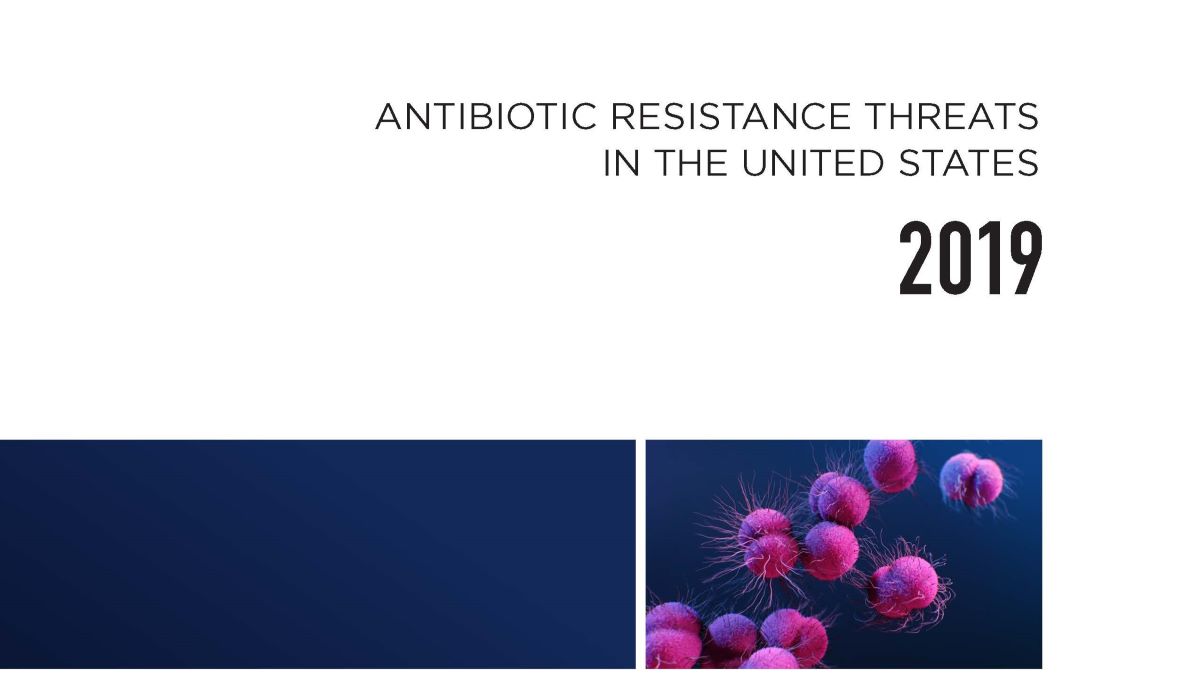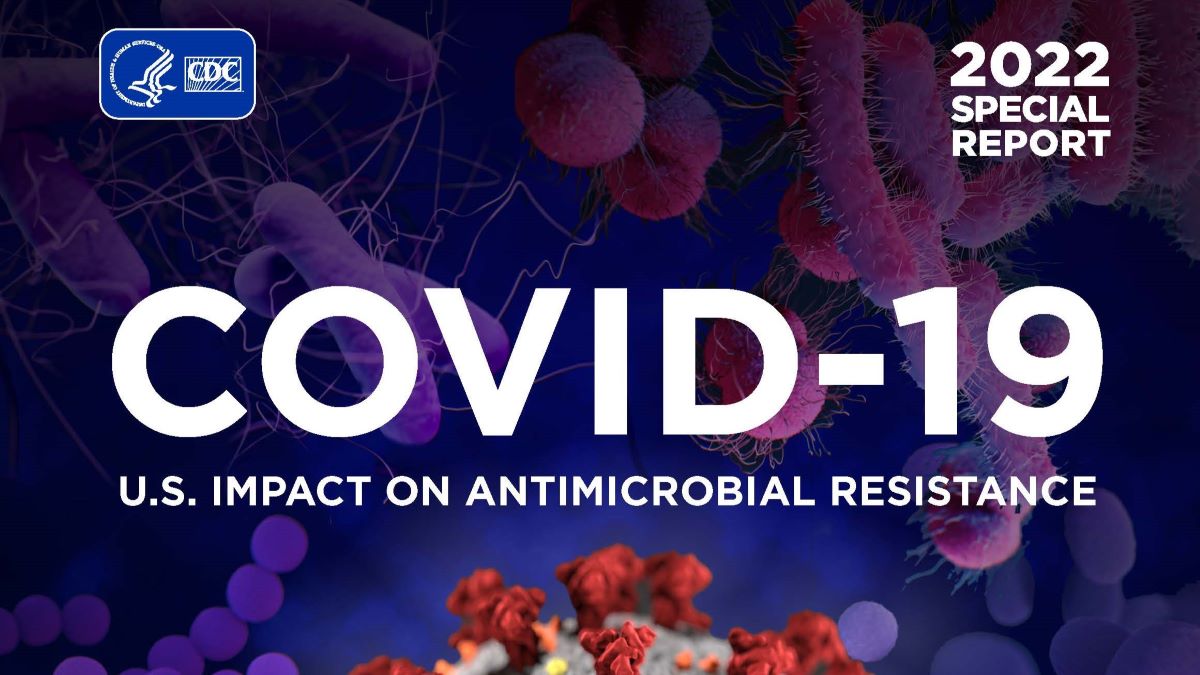Key points
- When it comes to combating the spread of antimicrobial resistance (AR), we all have a role to play.
- From human healthcare providers to veterinarians, we can all take action to prevent infections and slow the spread.
- Healthcare providers and veterinarians play an essential role in preventing infections and stopping the spread of germs.
- Veterinarians and healthcare providers are leaders and stewards in preserving antibiotics and antifungals for animals and people.

Protect your patients, combat antimicrobial resistance
Healthcare providers and veterinarians can protect patients from antimicrobial-resistant germs such as bacteria and fungi, which can cause difficult and sometimes impossible to treat infections.
Actions for human healthcare providers
Patients might visit your practice with an infection or may get infections when receiving health care in a facility, called healthcare-associated infections (HAIs). These infections can be caused by antimicrobial-resistant pathogens (harmful germs), which may lead to sepsis or death.
In fact, HAIs are commonly caused by antimicrobial-resistant pathogens. CDC reported in 2019 that more than 85% of antimicrobial-resistant deaths were estimated to have been caused by seven antimicrobial-resistant pathogens most associated with healthcare settings:
- Carbapenem-resistant Acinetobacter
- Candida auris
- Carbapenem-resistant Enterobacterales
- ESBL-producing Enterobacterales
- Vancomycin-resistant Enterococcus (VRE)
- Multidrug-resistant Pseudomonas aeruginosa
- Methicillin-resistant Staphylococcus aureus (MRSA)
The COVID-19 pandemic impacted antimicrobial resistance in hospitals. CDC data show that infections from healthcare-associated antimicrobial-resistant pathogens listed in its 2019 AR Threats Report increased in hospitals during 2020. Unprecedented challenges could have contributed to reduced comprehensive infection prevention and control practices, which are key to preventing antimicrobial-resistant infections and their spread. Additionally, hospitals treated sicker patients who required more frequent and longer use of medical devices like catheters and ventilators. Find out more about the impact of COVID-19 on antimicrobial resistance in the U.S.
Continue following these actions to help protect your patients and people in the community from antimicrobial-resistant infections.
Help prevent infections and their spread
- Follow infection prevention and control guidelines and access training resources (including screening at-risk patients when indicated):
- Ask patients if they have recently received care in another facility or traveled (germs can spread easily when people move).
- Ensure your patients receive recommended vaccines, and talk to them and their families about:
- Preventing infections.
- Keeping scrapes and wounds clean.
- Managing chronic conditions.
- Seeking medical care when an infection is not getting better.
- Understanding when antibiotics and antifungals are needed.
- Preventing infections.
- Alert the receiving facility when transferring patients who are colonized or infected with antimicrobial-resistant pathogens and ask colleagues to use an Inter-Facility Infection Control Transfer Form.
- Educate patients on ways to prevent spread of germs and infections, for example share ways to be a safe patient while in the hospital.
- Stay informed of current outbreaks.
Improve antibiotic and antifungal prescribing
Antibiotics and antifungals save lives, but any time they are used they can cause side effects and lead to antimicrobial-resistant infections.
- Follow clinical and treatment guidelines.
- Implement CDC's Core Elements of Antibiotic Stewardship to ensure appropriate antibiotic use.
- Consider fungal infections for patients with respiratory infections that do not respond to antibiotics, for example Valley fever (coccidioidomycosis), histoplasmosis or blastomycosis.
- Watch for signs and symptoms of sepsis: Clinical Resources and Guidelines.
- Perform appropriate diagnostic tests to guide antibiotic and antifungal therapy, including correct drug, dose (amount) and duration (period of time).
- Optimize tuberculosis (TB) TB therapy: Treatment for TB Disease.
Be alert and take action
- Be aware of infections and resistance patterns in your facility and community.
- Ensure you are notified by the lab immediately when antimicrobial-resistant pathogens are identified in your patients.
- Inform patients and families if they have an antimicrobial-resistant infection, as well as sexual partners when appropriate (e.g., gonorrhea).
- Know when to report cases and submit resistant isolates to the health department to identify unusual resistance or treatment failures (e.g., report gonorrhea isolates with decreased cephalosporin susceptibility or clinical treatment failure to CDC through your state or local public health authority).
Actions for veterinarians
Working with animal owners and producers, you can slow the spread of antimicrobial resistance by implementing disease prevention and control strategies and ensuring appropriate prescribing of improving the use of antibiotics and antifungals while also providing high-quality medical care for your animal patients.
Prevent and control disease
- Educate people on best practices for animal husbandry, vaccination, nutrition and biosecurity.
- Educate people who engage with animals on how to prevent and control disease in animals.
- Antimicrobial-resistant organisms have been shown to spread in veterinary hospitals. Implement infection prevention and control practices to keep your patients and pet owners healthy.
Clean your hands & equipment
- Practice proper hand hygiene regularly to remove germs, avoid getting sick and prevent the spread of germs between animals and people.
- Disinfect equipment to help prevent spread among animals and between farms.
Maintain accurate records of treatment & outcomes
- Document and review diagnostic test results and patient response to therapy.
- Re-evaluate reason for prescribing, dose (amount) and duration (period of time) as needed.
Select & use antibiotics and antifungals appropriately
- Follow regulatory requirements (use of medically important antibiotics should involve veterinary oversight).
- When available, use current established guidelines and diagnostic tests to guide appropriate prescribing of antibiotics and antifungals.
Stay current
- Stay up to date on disease prevention tools; consensus and prescribing guidelines; local, state and federal requirements; and professional standards for antibiotic and antifungal use.
Prevent environmental contamination
- Dispose of unused or expired antibiotics and antifungals appropriately and encourage that leftover drugs are not used on other animals without first consulting a veterinarian.
Commit to antibiotic and antifungal stewardship
- Implement practice-level stewardship activities, including documenting antibiotic and antifungal use data, examining use practices and serving as an educational resource for clients.
- Engage veterinary diagnostic labs to provide antibiograms to help determine which antibiotics will effectively treat infections and which may not be appropriate to use.
- Become familiar with and use the American Veterinary Medical Association (AVMA) established antibiotic use principles to build a stewardship plan for your practice settings:
- AVMA Information regarding antimicrobial use in veterinary practice and guidance by species.
- AVMA Judicious Therapeutic Use of Antimicrobials.
- AVMA Antimicrobial Stewardship Definition and Core Principles.
- Antimicrobial-resistant pathogens affecting animal health | American Veterinary Medical Association (avma.org).
- AVMA Information regarding antimicrobial use in veterinary practice and guidance by species.
Resources
Videos
Impacts of Antimicrobial Resistance on Cancer Care
People receiving cancer treatment are at a higher risk for infections and the growing global health threat of antimicrobial resistances can make infections harder, if not impossible, to treat. Panelists discussed the impacts of resistance on cancer care and the importance of infection prevention and control efforts to limit cancer patient exposure to antimicrobial-resistant germs.




